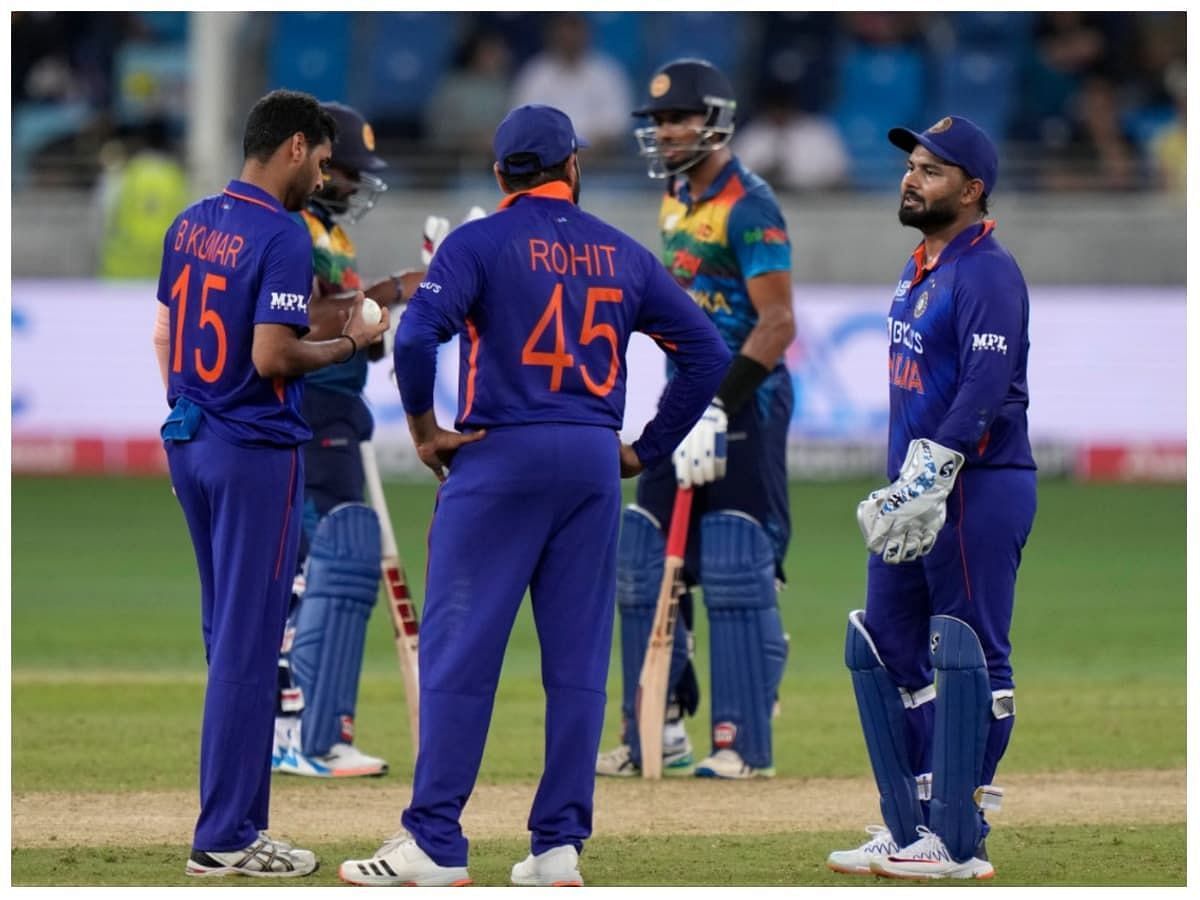
Road to T20I World Cup: 3 reasons why a 5-2-4 structure suits the Indian team
The Indian cricket team experienced a deflating outing at the recently concluded Asia Cup. Plagued by random selection methods and the lack of long-term plans, the general consensus is that India are failing to make the most of their potential.
While the inclusion of a certain Umesh Yadav (for the series against Australia) is not necessarily a bad reward for a bowler who had a brilliant 2022 Indian Premier League, the question is – why now? The more intriguing query would be – will he be given time and be backed to play now that he's made the cut?
Smart money would wager against it. It seems to be yet another short-term random inclusion for a team who are desperately seeking an answer out of the box.
What the country could be doing instead is stabilizing the squad, steadying the playing XI, and backing their players to find rhythm via regular cricket. While at it, head coach Rahul Dravid and captain Rohit Sharma will need to pin down one formation for the team – preferably a 5-2-4 (five batters, two all-rounders and four bowlers) formula.
This will help players get used to their particular roles instead of discovering new aspects of their gameplay in every alternate match. As the old adage goes – practice makes perfect.
In this article, we will take a look at why the 5-2-4 formation will be India's best hope for the upcoming T20I World Cup Down Under.
#1 Building blocks with a base
India had seemingly come close to settling on the 5-2-4 formation under Sharma-Dravid. It was effective as well, with results going their way. However, the injury to Ravindra Jadeja shook the core, which prompted a knee-jerk reaction from the think tank.
India abandoned their strategy and opted for an extra batter, which led to a lack of balance in the team. Going forward, the plan should be to return to the 5-2-4, with Axar Patel and Hardik Pandya as the two all-rounders.
While Patel may not be able to match Jadeja's crucial run scoring abilities, he will bring in more talent to pick up wickets with the ball. This, in turn, will allow Pandya to focus more on his batting rather than having to pitch in with too many overs.
The five batters could be set up with Rohit Sharma opening alongside KL Rahul. Virat's resurgence along with the explosive Suryakumar Yadav is the perfect middle-order foil for India and the experienced Dinesh Karthik can play as the finisher. This will allow Pandya and Patel (the all-rounders) to play as floaters in the batting order and chip in with quick runs wherever required.
Rishabh Pant and Deepak Hooda are able backups who can slot into the team in case of injuries. The idea would be to be aggressive from ball one once again and take the game to the opposition.
This will also send a clear message to the squad that selection will be based on merit rather than the availability of other players. This formation also allows a cushion in both the batting and bowling departments for the Indian team.
#2 Goodbye to the selection merry-go-round
As the IPL grew, so did India's talent pool. Under the Virat Kohli-Ravi Shastri era, there came a point when the Indian team had such an abundance of talent that chopping and changing became the norm.
Players were subjected to a selection merry-go-round which harmed their confidence. It also led to the crisis of finding a batter at No.4 due to the position being subjected to multiple batters over a short period of time. It ultimately led to India's demise at the 2021 T20 World Cup.
While the situation has improved a little for some players, others still find themselves subjected to the same selection headache. Players like Ravi Bishnoi, Dinesh Karthik, and Sanju Samson have failed to cement their spot despite performing more often than not when given the chance.
The selection dilemma has affected the bowling department as well, with bowlers now scared to show their aggressive side in the team. They are all content to do their bit (concede less) instead of risking getting hit for a few runs in order to take a wicket. This has resulted in the team getting slogged for massive runs in the final few overs in most games.
The 5-2-4 formation here will bring consistency and role definition. Led by Jasprit Bumrah, India need to pick three more bowlers who will be clear about their task and carry it out without fearing their position in the team.
The inclusion of Axar Patel in the middle overs to stem the run flow will also allow a wicket-taking bowler like Yuzvendra Chahal to attack the batters.
#3 Swing king in the beginning?
The importance of early wickets in cricket cannot be understated. India have picked up one wicket in their last 12 powerplay overs in the World Cup knockout stages.
This can be attributed to the reason that opening bowlers are fearful of conceding runs. Hence, instead of attacking the batters, they are bowling a defensive line.
This could be the leading reason behind Buvneshwar Kumar's dip in form. He has been in extremely poor form of late and has been hammered in death overs as well.
Kumar has conceded 122 runs in his last 12 overs, including one important game which led to India exiting the Asia Cup. Kumar clearly needs to be backed to bowl in the beginning where he should be given the license to attack.
India could use Bumrah and Arshdeep Singh at the death. Both bowlers possess the ability to bowl yorkers in their arsenal and are good at containing teams at the fag end of the innings.
The idea is to use every player exactly where they can showcase their best abilities.

